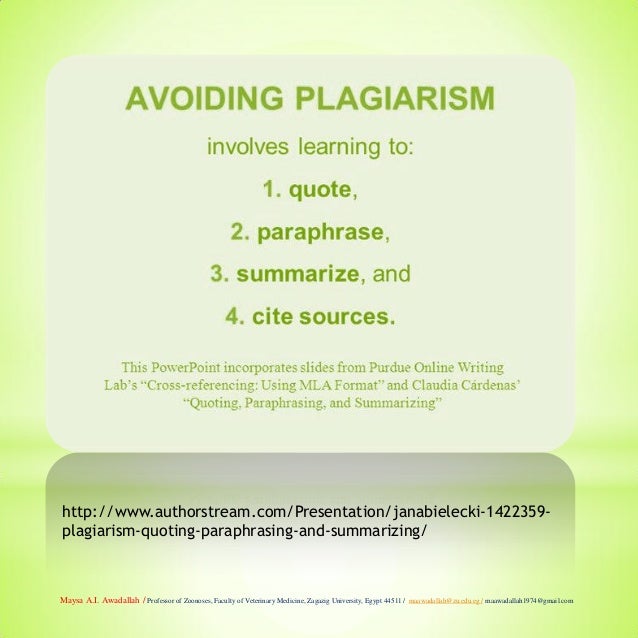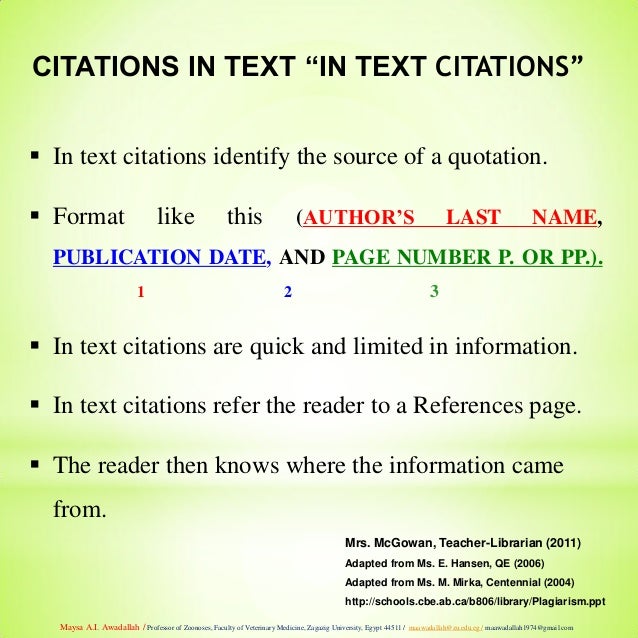
Table of contents
Plagiarism is the act of taking another man’s written ideas, spoken words, or multimedia materials in your own work without acknowledging the source. It’s considered to be an intellectual theft, a legal abuse, and a crime of academic dishonesty. The moment a person finds out that you take ideas from someone else without proper citation, you · For starters, make sure you know the author(s) of the page, where they got their information, and when they wrote it (getting this information is also an important step in avoiding plagiarism!). Then you should determine how credible you feel the source is: how well they support their ideas, the quality of the writing, the accuracy of the information provided, etc Plagiarizing takes away that trustworthiness, and hence the article fails to impress the readers. As a result, it is vital to ensure that there is a clear understanding of why avoiding plagiarism is important for academics and those in business. Nowadays, technological advances have made it much easier to find duplicate content in an article

Why Do People Plagiarize?
· For starters, make sure you know the author(s) of the page, where they got their information, and when they wrote it (getting this information is also an important step in avoiding plagiarism!). Then you should determine how credible you feel the source is: how well they support their ideas, the quality of the writing, the accuracy of the information provided, etc · Plagiarism means using someone else’s words or ideas without properly crediting the original author. Some common examples of plagiarism include: Paraphrasing a source too closely. Including a direct quote without quotation marks. Copying elements of different sources and pasting them into a new document Avoiding plagiarism. Plagiarism is the act of claiming the work of someone else, either intentionally or not to claim it as your own. It could be as simple as using or paraphrasing a publication or non-published piece, without proper acknowledgement or attribution, or by representing the work of another artist or work in your work as your own

�� Types of plagiarism
Avoiding plagiarism. Plagiarism is the act of claiming the work of someone else, either intentionally or not to claim it as your own. It could be as simple as using or paraphrasing a publication or non-published piece, without proper acknowledgement or attribution, or by representing the work of another artist or work in your work as your own · Plagiarism is almost equivalent to stealing, with one key difference: the original work is still out there somewhere. Unfortunately, not many people are very keen on finding original resources. Avoiding plagiarism shows that Find the idea that you want to include. Write this idea in direct quotes. Add the author name and page number. Put the full reference at the end of your document, to make sure you remember to include it. You have avoided plagiarism. Stop here, or

Breadcrumb
· Plagiarism means using someone else’s words or ideas without properly crediting the original author. Some common examples of plagiarism include: Paraphrasing a source too closely. Including a direct quote without quotation marks. Copying elements of different sources and pasting them into a new document · Plagiarism is almost equivalent to stealing, with one key difference: the original work is still out there somewhere. Unfortunately, not many people are very keen on finding original resources. Avoiding plagiarism shows that · For starters, make sure you know the author(s) of the page, where they got their information, and when they wrote it (getting this information is also an important step in avoiding plagiarism!). Then you should determine how credible you feel the source is: how well they support their ideas, the quality of the writing, the accuracy of the information provided, etc

Step 1: Direct Quotation
There are specific ways to avoid plagiarism that experts suggest to steer clear of the harassment that it causes. When looking at how to prevent plagiarism, there are techniques like proper citation, using quotes, paraphrasing, using plagiarism checkers that detect plagiarism, and others that can be adopted to prevent plagiarism · Preventing plagiarism: a guide for students and educators. Academic integrity — the commitment to ethical behaviors and conduct in academic settings, including respect, accuracy, and honesty — is fundamental to learning and expressing new ideas, while respecting the ideas and contributions of others. More specifically, academic integrity · Although dictionary definitions of plagiarism are supposedly very clear, the widespread incidence of plagiarism—perhaps a consequence of the global spread in technoscientific research activities 6 —suggests that confusion abounds in the minds of many researchers. 7 No wonder, the US National Science Foundation now requires every university
No comments:
Post a Comment